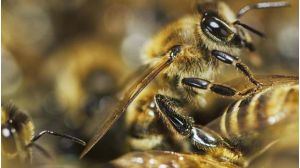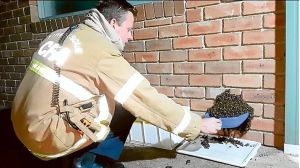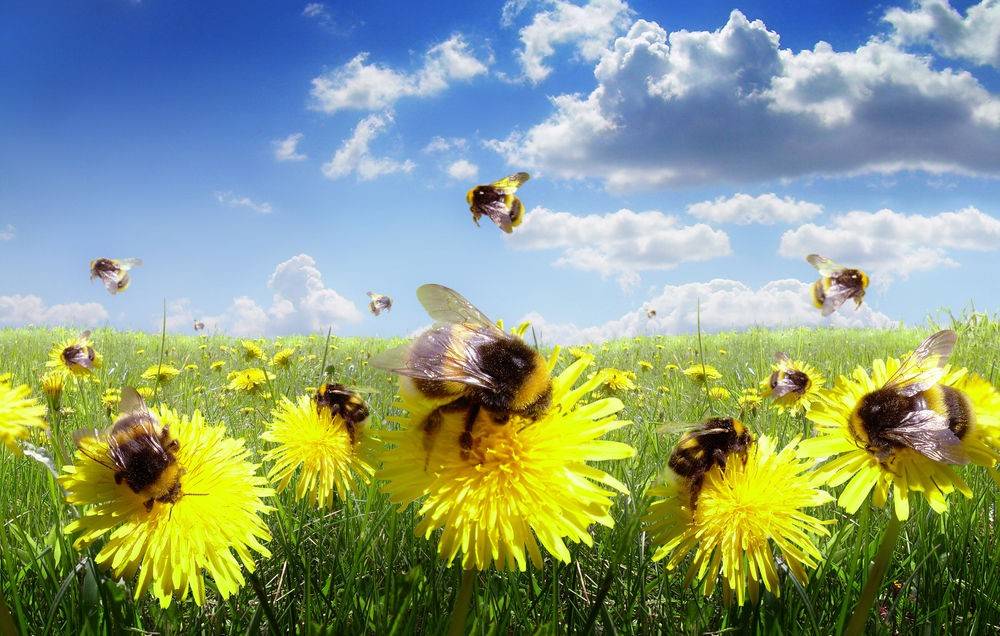Threatened honey bees, endangered bumblebees, fading butterflies … we hear alarms all the time about the global decline in pollinators, but does anybody really know how many are out there?
Starting May 1, there’ll be a free app to try to answer that question as part of the first World Bee Count project, and all you need to participate is a smartphone and a willingness to snap photos, says beekeeper, farmer and computer science professor James Wilkes.
“It’s just, if you see a flower with a bug on it, then take the picture and send it in.”
The project is designed to be as simple as possible, to build awareness of the critical role that pollinators play in our world, Wilkes said. Those “bugs” we pretty much ignore — or run from — every day are essential to our survival. “We’re trying to build awareness about the various insects who pollinate our food and flowers and the importance to our food systems,” he said.
That role is pretty crucial. “Some scientists estimate that one out of every three bites of food we eat exists because of animal pollinators like bees, butterflies and moths, birds and bats, and beetles and other insects,” according to the U.S. Department of Agriculture’s Natural Resources Conservation Service.
Ultimately, Wilkes hopes the data collected by the World Bee Count project can be used by researchers who want to study the photos and their location to better pinpoint the location of certain pollinators. That’s why all the data will be held at the Appalachian State University Center for Analytics Research and Education in Boone, N.C., where Wilkes teaches. (Wilkes also is CEO of Hive Tracks, a North Carolina company that makes software for beekeepers.)
But the immediate goal is to get people engaged and create a map that shows the overall number of pollinators counted around the world, on the Beescount.org website. The map will be posted on May 20 — World Bee Day — but the plan is to keep gathering data and updating the map, Wilkes said.
The project sponsor, Cedar Anderson, the co-owner of Australian-based Flow beehives, says he has a bigger vision.
“We aim to inspire people with the education piece, so they can maybe think, ‘These pollinators are doing such an incredible job in my garden, perhaps I shouldn’t spray with insecticides,’” said Anderson, a former Greenpeace worker who used to fly paragliders over jungles (“with an engine on my back”) to track illegal burning before he became a business owner and dad.
“If we get enough participants, we might even find new species, pollinators that haven’t been recorded yet. We need to know more about pollinators because they’re so incredibly important to our natural system. If we can map where they are, perhaps we can make better decisions about what’s important and keep the whole system going.”
For now, however, Wilkes wants to play up the ease of participation and its potential for fun. Pre-COVID-19, they had hoped to visit major metro areas to promote the project and maybe even stage competitions (“Hey, Los Angeles, can you beat New York City on the number of pollinators?”), but those plans have been pushed to the future.
Mostly, Wilkes just wants to get as many people involved as possible now, if only to better understand how critical they are to food production and the ecosystem.
“I don’t think people understand what pollination is: It’s the creation of more life,” Wilkes said “If we have more pollinators, we’re creating more life.”





